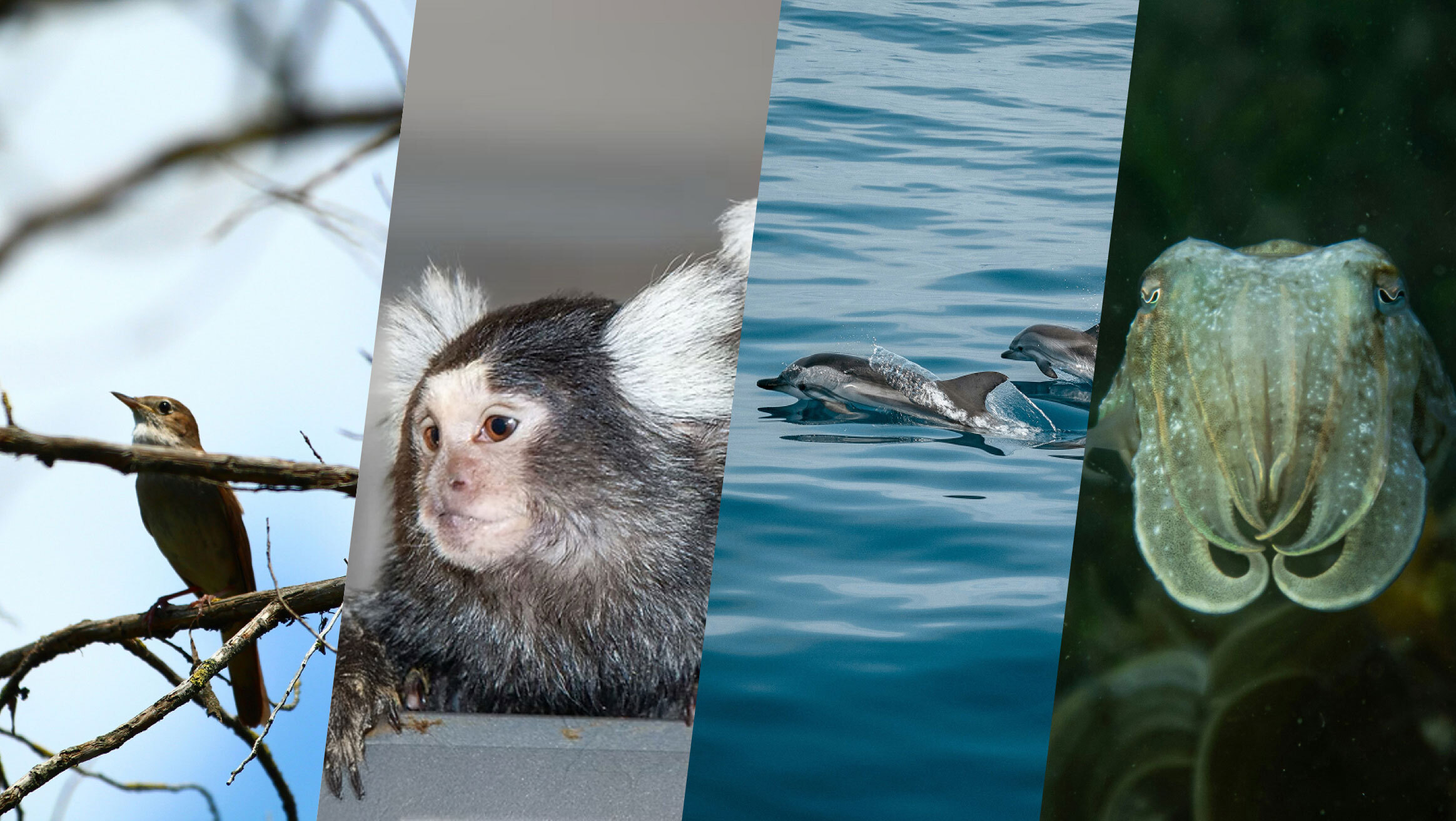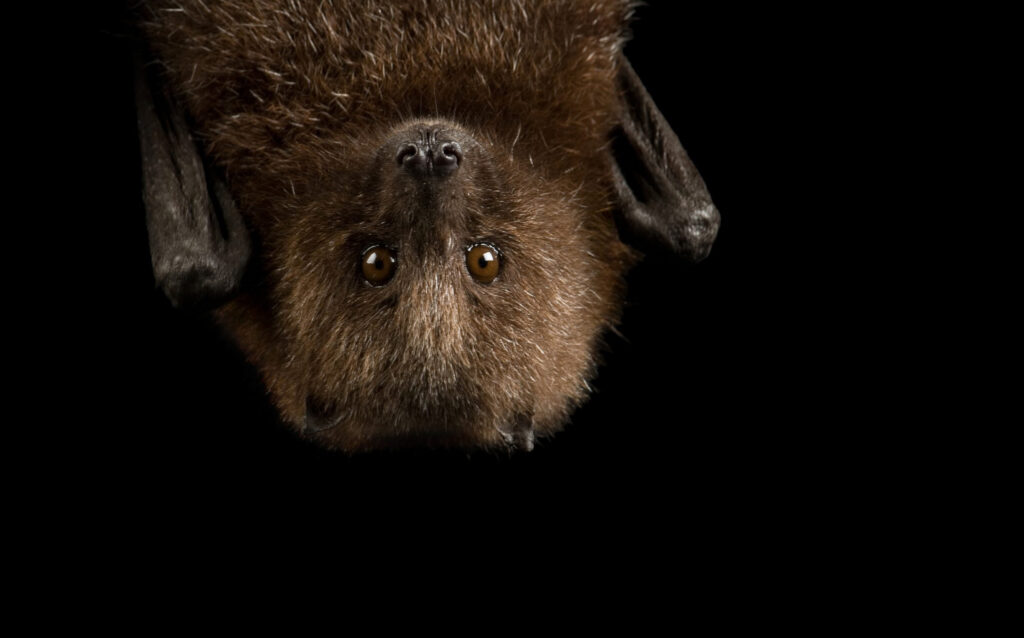Shortlist for annual prize marks first step towards AI-powered Interspecies Two-Way Communication
Press Releases —

- The Coller Dolittle Challenge has revealed the shortlist for the winner of its first USD$100,000 annual prize – with a USD$10million Grand Prize on offer for the team that ultimately ‘cracks the code’ of interspecies two-way communication.
- Four teams – from the USA, Germany, France, and Israel – have taken ground-breaking steps in communicating with dolphins, nightingales, cuttlefish, and monkeys respectively.
- The winner of the 2024-2025 prize will be announced at a virtual event on 15th May 2025.
London, 15 April 2025: Today, the Jeremy Coller Foundation and Tel Aviv University announced the four finalists in line for the first annual USD$100,000 prize from the Coller Dolittle Challenge for Interspecies Two-Way Communication. Annual prizes of USD$100,000 will be awarded until a team “cracks the code” of interspecies communication, winning the USD$10million Grand Prize.
The four finalists have used cutting-edge technology and breath-taking ingenuity to decipher, interface and mimic non-human organism communication – using a non-invasive approach to understand how these species communicate in unique depth, and eliciting responses to signals sent by humans. These strides in communicating with terrestrial, marine and aerial species provide a tantalising taste of what’s to come from this challenge.
At a virtual event on 15th May 2025, the finalists will be invited to present their research to the scientific community and public at large before the expert judging panel breaks out to deliberate – with the winner of the $100,000 prize to be announced live. The event will also feature a guest lecture by scientist Irene Pepperberg, titled Studies on the Communicative and Cognitive Abilities of Grey Parrots.
The four teams selected following a rigorous peer review of their research by the scientific committee represents a global effort, with researchers from the USA, Germany, France, and Israel. The groundbreaking research spans across various species, revealing key insights into the complexity of non-human communication:
- Dolphins’ use of Complex Whistle for Communication: A collaborative team from the USA led by Laela Sayigh and Peter Tyack from the Woods Hole Oceanographic Institution has been studying a resident bottlenose dolphin community in Sarasota, Florida. They have identified 20 distinct whistle types used by multiple dolphins for communication. Playback experiments suggest these signals may form a language-like communication system, with shared, context-specific meanings.
- AI-Powered Nightingale Communication: Daniela Vallentin of the Max Planck Institute for Biological Intelligence and her team based in Germany, along with Jan Clemens of the European Neuroscience Institute, have developed an AI model that can generate and analyse nightingale whistles, allowing for unprecedented interaction with the birds. The system breaks down nightingale songs into individual syllables, offering a deeper understanding of their structure and syntax.
- Cuttlefish & Visual-Tactile Signals: Sophie Cohen-Bodénès and Peter Neri, who began their research in École Normale Supérieure in Paris, have discovered a new communication method in cuttlefish involving arm movements. These “arm wave signs” are structured, expressive sequences that can be combined in specific patterns. Experiments indicate that cuttlefish respond to these displays and vibrations, suggesting they might communicate through both sight and touch.
- Marmoset Monkeys and Individual Naming: A team of researchers based in Israel at the Hebrew University of Jerusalem, led by David Omer, discovered that marmoset monkeys use specific vocalisations to identify each other by name. This finding suggests that vocal communication in non-human primates is more sophisticated than previously thought and may provide insights into the evolution of human language.
Professor Yossi Yovel, Tel Aviv University and Chair of the Coller Dolittle Challenge said,
“It’s an exciting time to be alive in the world of interspecies communication – with this year’s finalists proving the power of AI to advance us towards with a better understanding of non-human species.“I’d like to thank all of the entrants to this year’s prize. Whittling the list down to just four outstanding entries was a challenge, but the judging panel agreed that these offered the most promising evidence of understanding how animals communicate, bringing us ever closer to reaching our goal. I am sure that the list of proposals will only be longer in the future years of the competition”
Jeremy Coller said,
“In some ways we’re a long way from our goal – we still can’t have a conversation with the animals who share our homes. But these finalists show that, in many other ways, we are tantalisingly close to cracking the code of interspecies communication. It feels like a breakthrough is just around the corner. From monkeys calling each other by name to cuttlefish waving and vibrating on cue, these projects demonstrate the amazingly diverse and complex ways in which living things communicate, and give a tantalising glimpse of how we may one day hold meaningful dialogue with our fellow animals.”
As the challenge progresses, prizes of USD$100,000 will be awarded to the most promising research team each year to support their work in developing scientifically rigorous models and algorithms for coherent communication with non-human organisms.
The Grand Prize of either a USD$10million equity investment or a USD$500,000 cash prize will be awarded to the team that successfully “cracks the code” – whereby the animal communicates independently without recognizing that it is communicating with humans.
Join the Coller Dolittle Challenge team in congratulating the finalists for their landmark contributions in the field of interspecies communication, bringing mankind closer to understanding and engaging with non-human species. To register your interest to attend the event, please register here.
Notes to editors:
Media contact
For more information, including interviews and comment, please contact:
- Ino Rousselet, ESG Communications
- t: +44 (0)7786148010 | e: ino.rousselet@flag.co.uk
The Coller Dolittle Challenge:
This global initiative will be administered by Tel Aviv University and chaired by Professor Yossi Yovel, a noted scientist in the field. Professor Yovel chairs an expert scientific panel of judges including Professor Inbal Arnon (Professor of Psychology, HUJ), Professor Jonathan Birch (Professor of Philosophy, LSE), Professor Mirjam Knörnschild (Biologist, Frei Uni.), Professor Elodie Floriane Mandel-Briefer (ecologist, University of Copenhagen), Professor Oded Rechavi (Geneticist, TAU) and Professor Amir Teicher (History of Science, TAU), among others. The challenge will be operated on an open access basis with data made available to the scientific community for advancement of this field of study.
More information about the challenge can be found here:
- https://www.sciencedirect.com/science/article/pii/S0960982223008485
- https://jeremycollerfoundation.org/the-coller-dolittle-challenge/
About The Coller Foundation
The Jeremy Coller Foundation addresses the consequences of intensive animal agriculture for human health, the environment, animal welfare and global sustainability with the aim of supporting the transition to a more sustainable food system. The Foundation’s flagship initiatives include The FAIRR Initiative (Farm Animal Investment Risk & Return), the fastest growing investor network representing $75+ trillion assets, raising awareness of the material risks and opportunities around intensive animal agriculture; the Coller Animal Law Forum (CALF), which aims to accelerate law and policy globally in this area; and The Jeremy Coller Centre for Animal Sentience at the London School of Economics and Political Science (LSE). The Jeremy Coller Foundation also supports a number of initiatives in business and venture education and pensions innovation worldwide.
Further Reading
